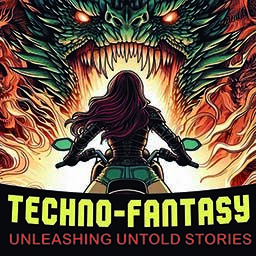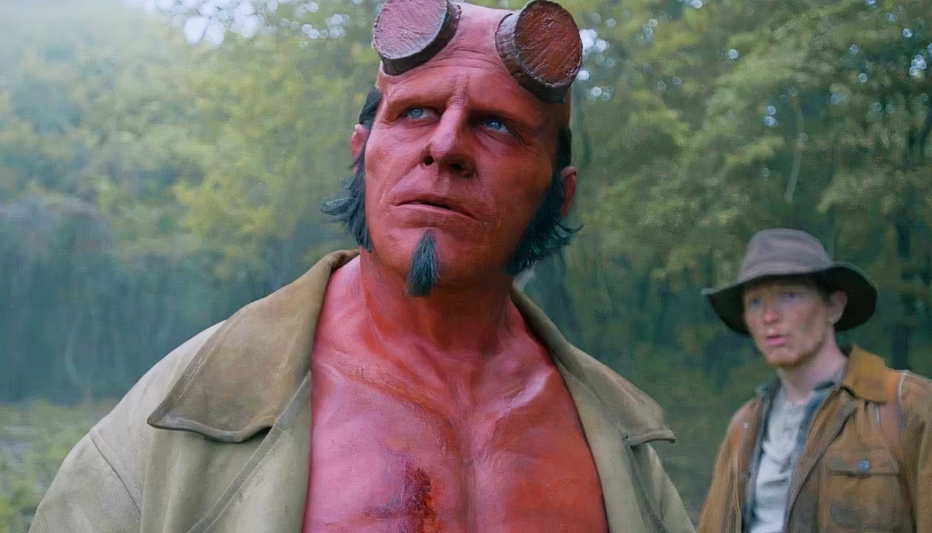Hellboy, created by Mike Mignola, first appeared in 1994 under Dark Horse Comics when the author decided to leave his career at Marvel and DC to pursue an independent comic. In interviews, Mignola stated that Hellboy was inspired by his father, a war veteran. The character embodies physical traits and the resilient personality of his father, though with a voice and manner of speaking that reflect Mignola’s own. Over time, Hellboy evolved into a vast universe, including titles like B.P.R.D., Abe Sapien, and others, with Mignola always playing a key role in the creative direction, even when other artists contributed to the comics.

Before creating Hellboy, Mike Mignola worked as an artist for Marvel and DC Comics during the 1980s and early 1990s. Beginning in 1983, he illustrated titles such as Daredevil, Luke Cage and Iron Fist, The Incredible Hulk, Alpha Flight, and Rocket Raccoon for Marvel Comics. Starting in 1987, he worked on Phantom Stranger, World of Krypton, and Cosmic Odyssey (perhaps the most famous series he worked on), collaborating with Jim Starlin, who had created characters like Thanos, Drax the Destroyer, and Gamora. Mignola also produced covers for DC titles like Batman: A Death in the Family and the Batman: Gotham by Gaslight miniseries, the first Elseworlds title that reimagines DC characters in alternate timelines, in this case, placing the Dark Knight in a Victorian setting.
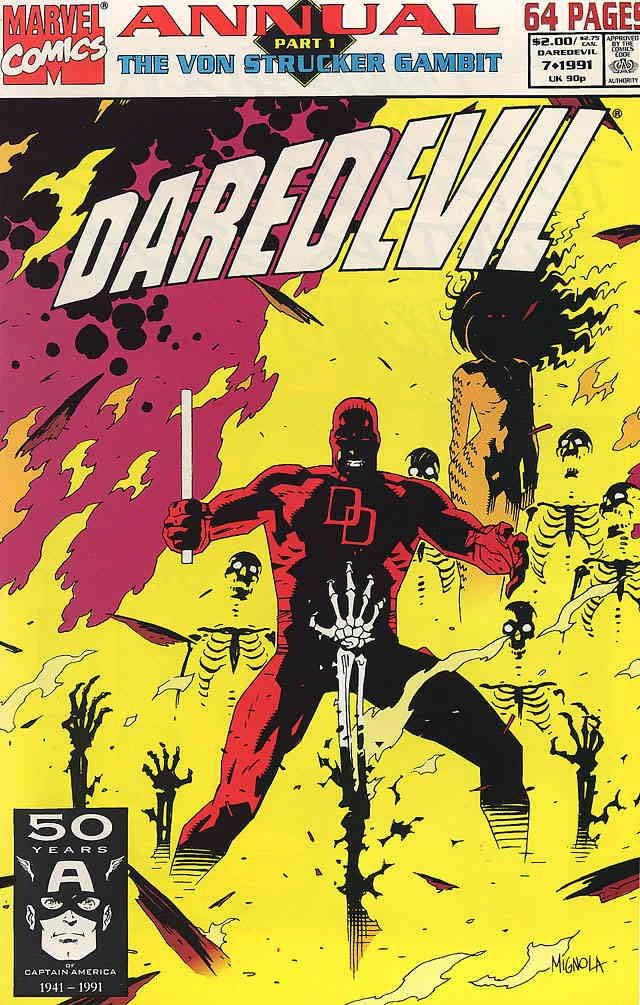
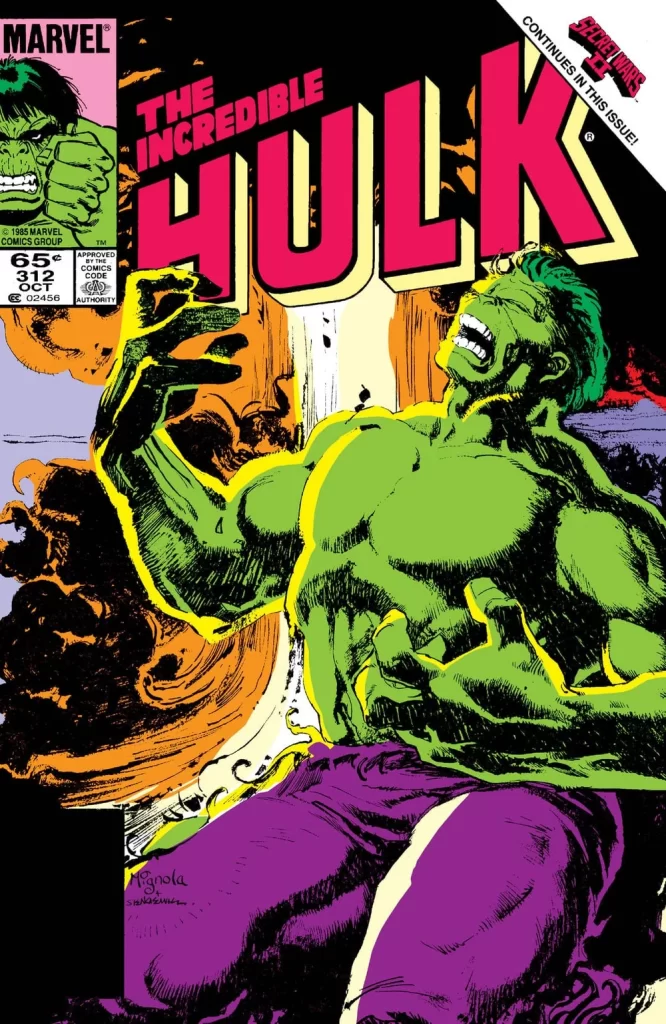
Mignola also worked with the X-Men and Wolverine. He illustrated the miniseries Wolverine: The Jungle Adventure (1990), written by Walt Simonson. In this story, Wolverine travels to the Savage Land and faces various dangers, including an ancient robot from the alien race known as the Celestials. Mignola also worked on some covers and illustrations for X-Men stories during the 1980s and 1990s.
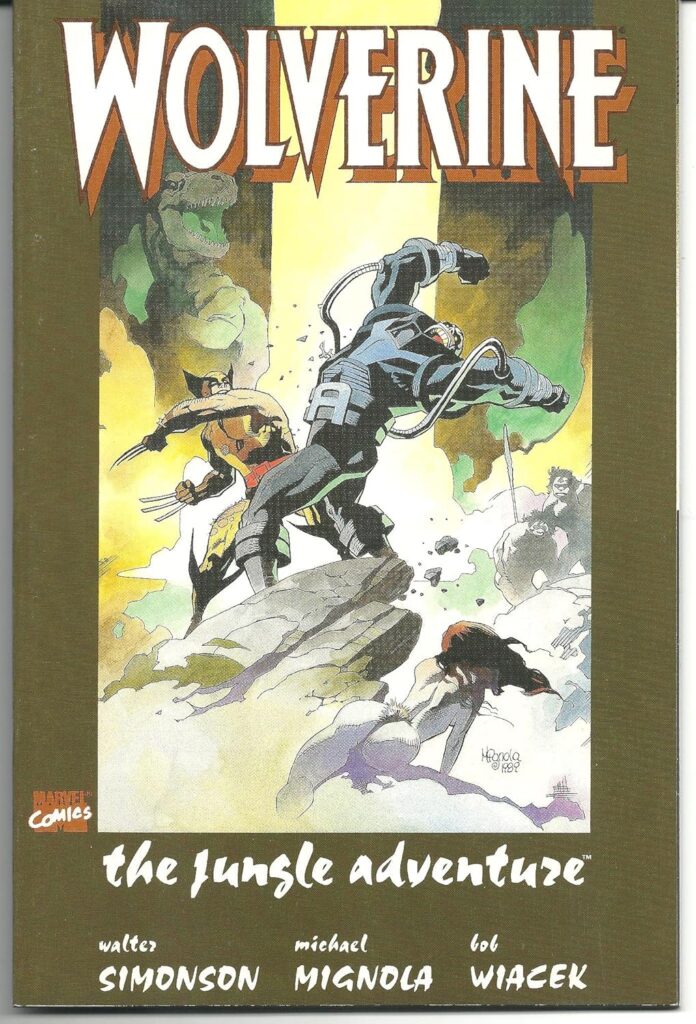
Though highly regarded by his peers, Mignola’s artwork did not resonate as much with mainstream comic book readers, who often preferred more conventional styles of superhero art.
Hellboy made his first appearances in 1991 and 1993. In 1991, he appeared in an illustration Mignola created for a Salt Lake Comic Con convention flyer. In 1993, the character graced the cover of the Italian fanzine Dime Press #4 and made his official comic debut in the anthology San Diego Comic-Con Comics #2, in a black-and-white story. Hellboy’s early design was far more demonic, featuring four horns, wings, and a belt buckle inscribed with the name “Hellboy,” along with a fish and crab hanging from it, without his signature Right Hand of Doom. According to Mignola, the name “Hellboy” was invented to fill a space on the belt buckle, initially as a joke, but he liked it enough to keep it for future use.
In the 1993 comic book, Hellboy had lighter, almost beige skin, and he did not yet wear his famous trench coat or BPRD uniform. When Mignola decided to make Hellboy a recurring character, he changed the skin color to the vibrant red that became his trademark. Before his first solo appearance in the story Seed of Destruction in 1994, he made his first color appearance in John Byrne’s Next Men #21.
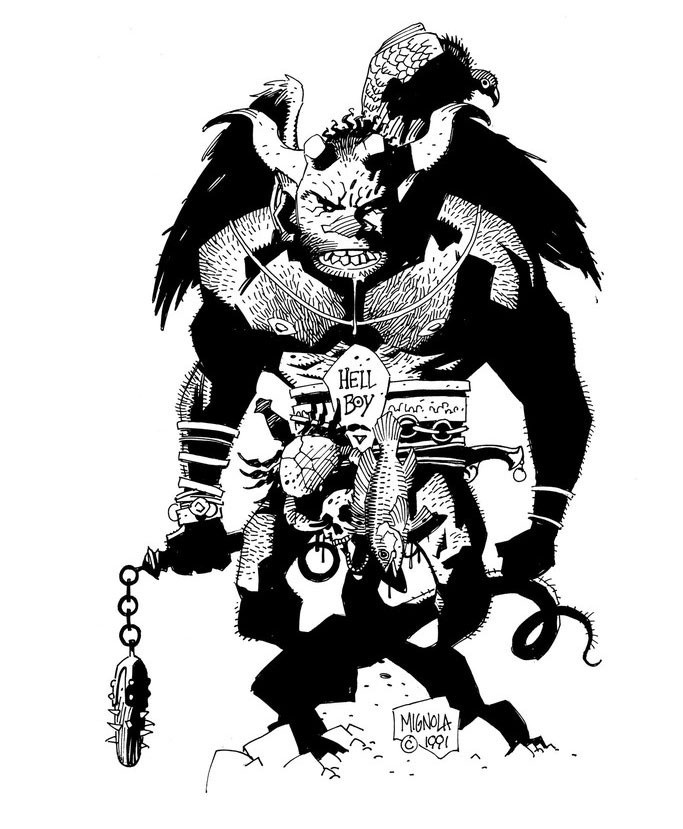
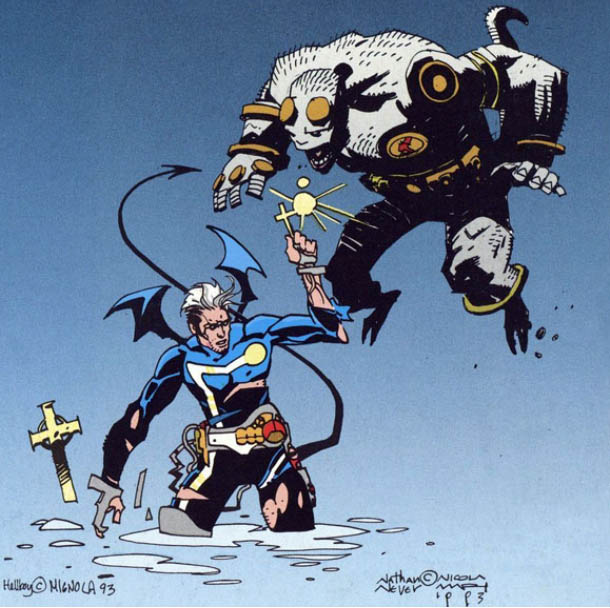

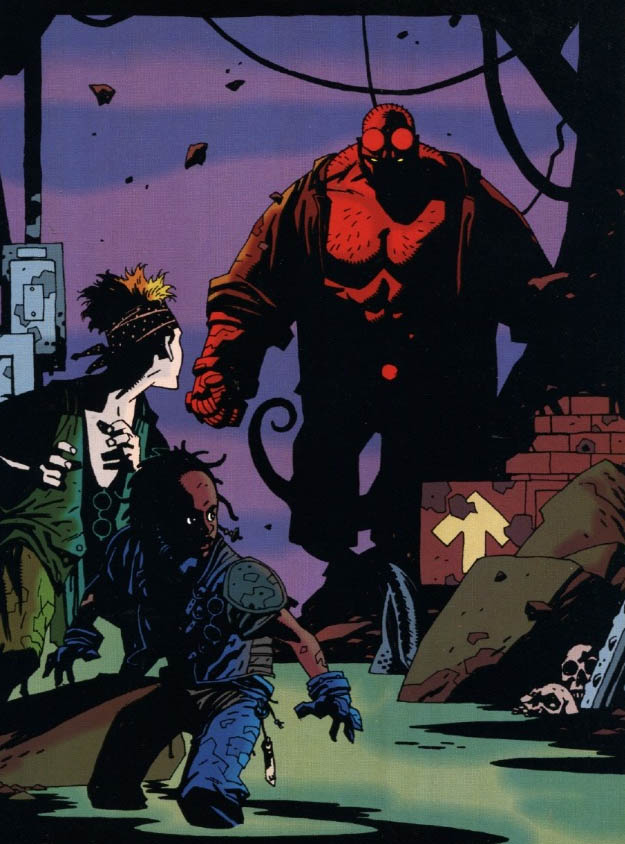
The Right Hand of Doom has fascinating origins, drawing inspiration from Catholicism, mythology, Gothic literature, and even the works of J. R. R. Tolkien. Mignola wanted Hellboy to have an iconic weapon, similar to Thor’s hammer or Captain America’s shield, so he crafted the stone hand and its deep mythology to give the character a defining feature.
“In the beginning of time, God created entities to help Him in the act of creation. However, Anum, the most powerful of these entities, grew envious of what God was doing and plunged his hand into God’s secret fire to increase his powers, creating Ogdru Jahad, the Dragon, destined to bring Ragnarok upon the world. As soon as it was born, the Dragon gave birth to 369 monsters, the Ogdru Hem, who began to destroy everything. Regretting his actions, Anum imprisoned the monster and its offspring in crystal and cast them into the abyss. But the other entities feared Anum’s power and destroyed him, imprisoning his essence in a stone hand, which would become the key to releasing Ogdru Jahad and bringing Ragnarok to Earth.”
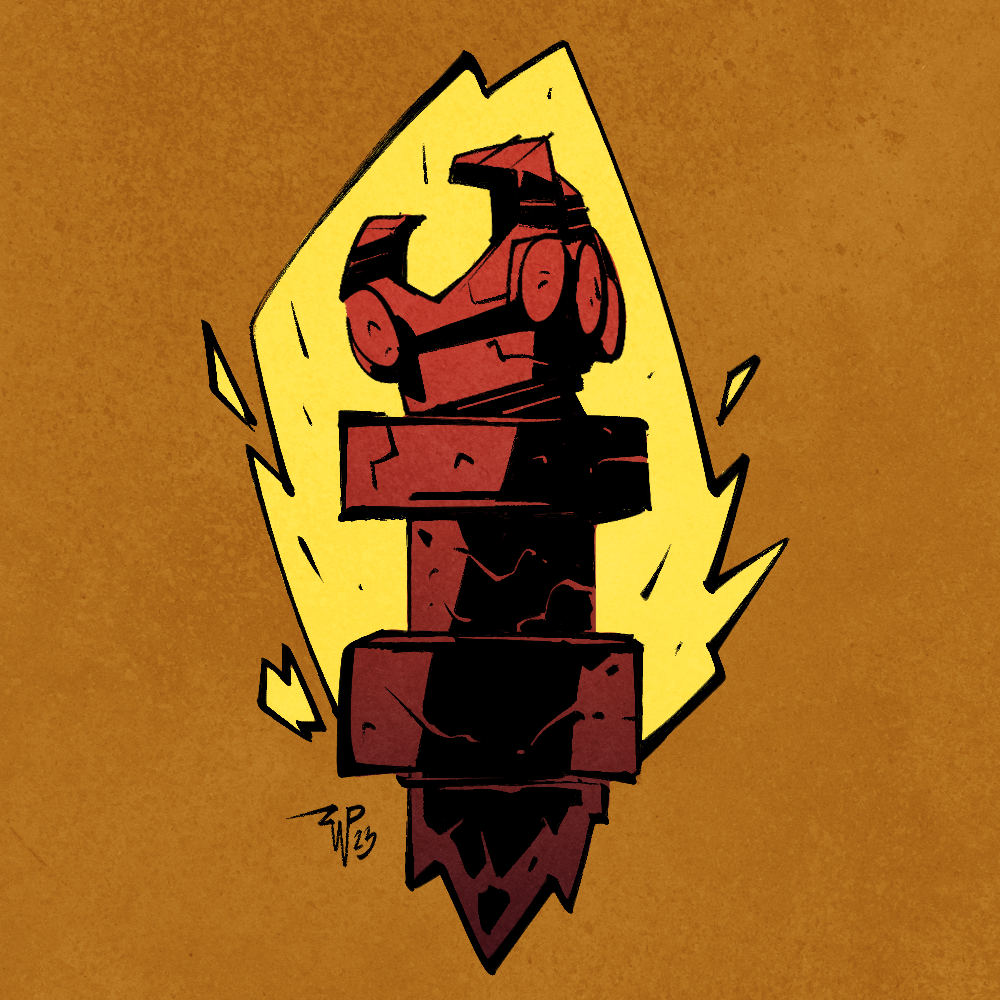
Originally, Mignola envisioned Hellboy as part of a traditional superhero team. However, after struggling to develop the other characters, he decided to focus solely on Hellboy. Although Hellboy works with the Bureau for Paranormal Research and Defense (B.P.R.D.), a team-based organization, many of its agents are based on the initial concept of the superhero team Mignola had planned.
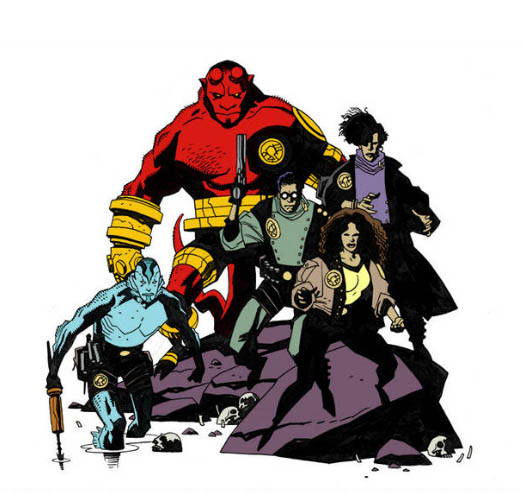
John Byrne played a crucial role in helping Mignola write the first Hellboy miniseries, Seed of Destruction (1994), allowing Mignola to focus on the artwork while Byrne structured the narrative and dialogue. This collaboration helped define Hellboy’s tone and style.
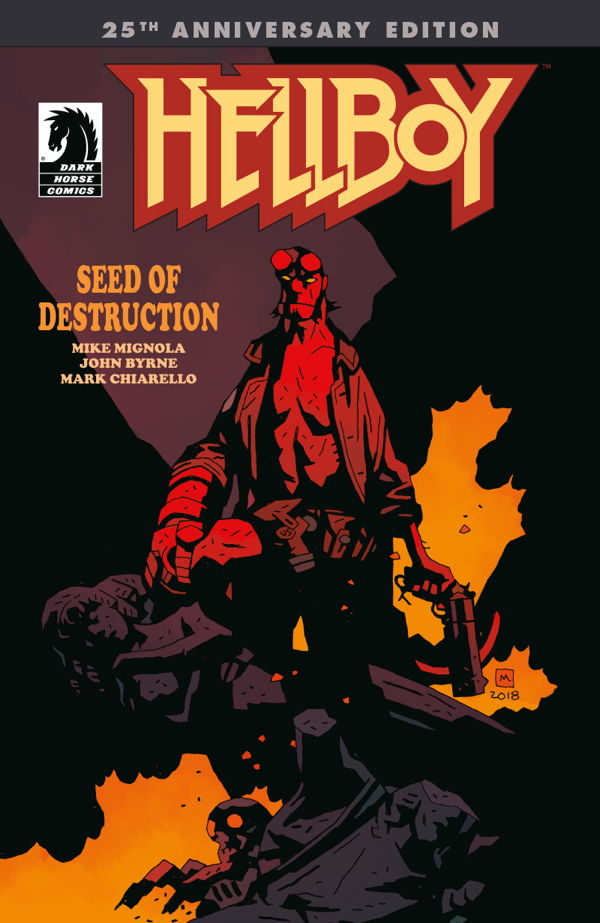
Inspirations for Hellboy
- Mythology and Folklore: Mignola has always had a strong connection to folklore and mythologies from various cultures, which is evident in Hellboy’s universe. The stories often explore American and European legends, blending the supernatural into the everyday world.
- H.P. Lovecraft: Lovecraft’s work is a significant influence on Mignola. Themes like ancient horrors, the unknown, and humanity’s insignificance in the face of cosmic forces are central to the Hellboy series. Creatures like Ogdru Jahad are direct homages to Lovecraft’s Outer Gods.
- Gothic Art and German Expressionism: Mignola’s use of heavy shadows and angular forms is heavily influenced by Gothic art and German Expressionism, particularly films like The Cabinet of Dr. Caligari (1920). He has also cited illustrators like Edward Gorey and Charles Addams as visual inspirations.
- Pop Culture and Classic Comics: Though he grew up reading superhero comics, Mignola was also drawn to supernatural and monstrous themes, creating a hybrid that resulted in Hellboy—a sort of anti-hero who tackles the occult with practicality and humor.
Mignola’s artistic style is marked by chiaroscuro (bold contrasts of light and shadow), influenced by artists like Jack Kirby and Richard Corben. Alan Moore described Mignola’s work as “German Expressionism meets Jack Kirby.”

Hellboy in Cinema
Hellboy’s cinematic adaptations, directed by Guillermo del Toro and starring Ron Perlman in 2004 and 2008, were successful. A third film was anticipated but never materialized. In 2019, a reboot starring David Harbour was released but failed to achieve the same acclaim.
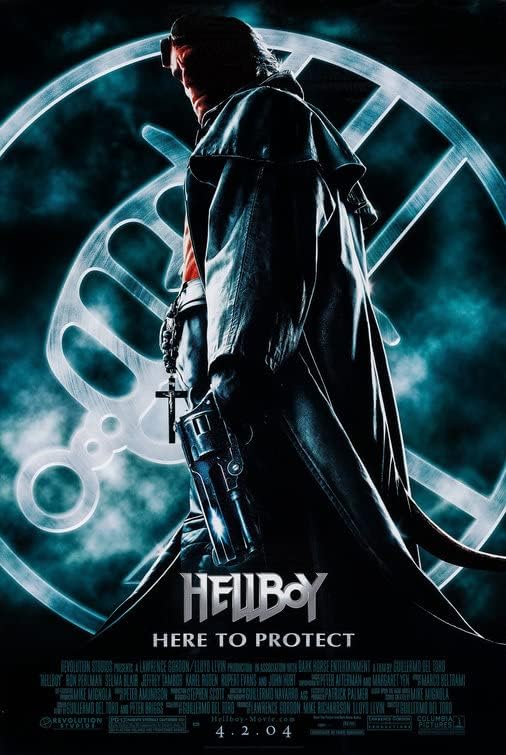
Mignola has always been closely involved with the adaptations, preferring to focus on expanding Hellboy’s universe through the comics, where he feels freer to delve into the mythology and complex stories of Hellboy and his companions. Creative differences with del Toro are often cited as one of the reasons for the cancellation of the third film.
Origin in the Comics:
Hellboy, whose true name is Anung Un Rama, meaning “and upon his brow is set a crown of flame,” is a demon summoned to Earth during World War II through a ritual conducted by the Russian mystic Grigori Rasputin, who was acting in service of the Nazis. The intention was to bring forth a powerful force to aid the Third Reich in winning the war. However, the ritual did not go as planned, and Hellboy instead appears in a church in East Bromwich, England, where he is discovered by Allied troops led by Professor Trevor Bruttenholm, who would come to be a father figure to him.

Hellboy is raised and educated as a human by Professor Bruttenholm and joins the Bureau for Paranormal Research and Defense (B.P.R.D.), an organization dedicated to combating supernatural threats. In time, Hellboy earns the title of “The World’s Greatest Paranormal Detective.”
Throughout his stories, Hellboy faces a vast array of supernatural creatures, including demons, vampires, werewolves, and mythical monsters. He is continually haunted by his own demonic nature and the fear that he might one day fulfill the prophecies that cast him as the bringer of the apocalypse.
One of the most significant arcs is Seed of Destruction (1994), which explores his origins and his connection to the apocalypse. In subsequent series, Hellboy repeatedly confronts the mystic Rasputin and learns more about his prophetic destiny as a harbinger of destruction.
Another crucial chapter in his saga is the revelation of his ancestry: Hellboy discovers that he is the descendant of an English witch, Sarah Hughes, and a high-ranking demon of Hell, Azzael. His mother is descended from King Arthur and Morgana Le Fey through their son Mordred. In 1574, his mother made a pact with Azzael, resulting in Hellboy’s conception within her soul. Before her death, she repents, marries, and has two children who later become a priest and a nun. She confesses the pact to them on her deathbed, requesting that they guard her body for three days to prevent her soul’s descent into Hell. Azzael, however, claims her soul, incinerates her two children, and brings her to Hell, where she gives birth to Hellboy. Immediately upon Hellboy’s birth, Azzael severs his hand with a sword and replaces it with the Right Hand of Doom. At that moment, Hellboy is summoned to Earth by Rasputin.
The Arc “Hellboy in Hell”: Hellboy ultimately embraces his fate by perishing in battle and descending into Hell, where he confronts his past, his lineage, and the true purpose of his existence.
Hellboy and the Crooked Man Comics
Mike Mignola drew from various sources to create the story “The Crooked Man,” including folklore, horror literature, and personal experiences.
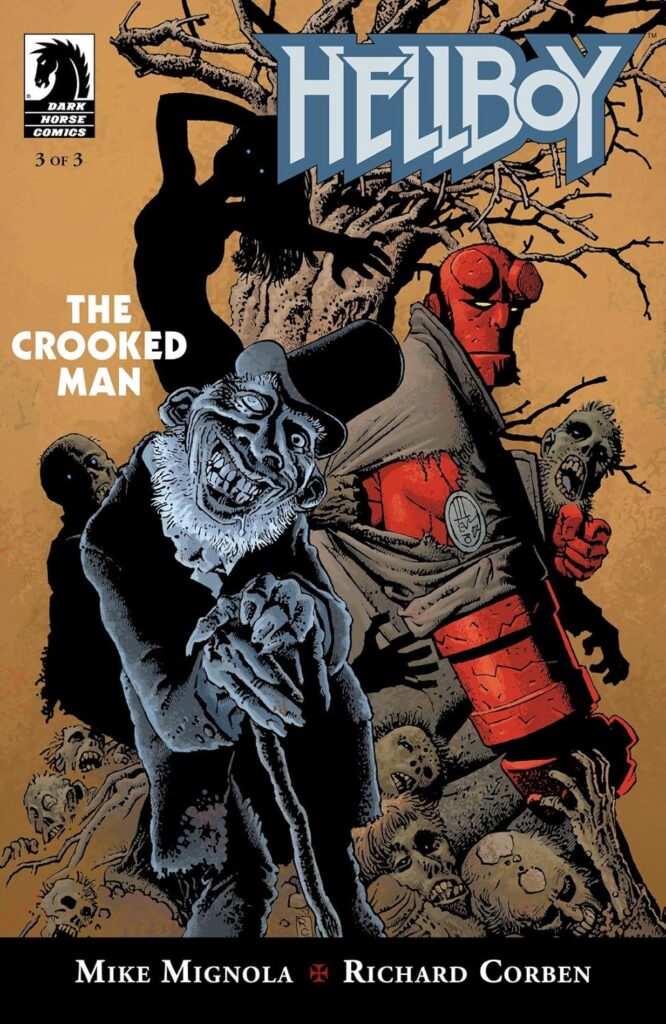
In the comic’s foreword, Mignola notes that The Crooked Man was an homage to Manly Wade Wellman, an American horror writer who set his stories in the Appalachian Mountains, where his main character, John, encounters supernatural creatures of the region as he wanders. In interviews, Mignola also mentions the following references:
- American Folklore: The Crooked Man is inspired by folklore from the American heartland, particularly the Appalachian region, where stories of witches, vengeful spirits, and demonic pacts are common. Mignola aimed to capture the essence of these legends and translate them into Hellboy’s universe.
- Nathaniel Hawthorne’s “Young Goodman Brown”: Mignola cited this tale as an influence, due to its atmosphere of psychological horror and exploration of Puritanism and guilt. Goodman Brown’s encounter with a satanic congregation in the forest resonates within the plot of The Crooked Man.
- William Hope Hodgson: Mignola also mentioned the work of Hodgson, a British author from the early 20th century known for his stories of maritime and supernatural horror. Hodgson’s dense, mysterious atmospheres influenced the dark, oppressive tone of the story.
- Witchcraft and the Devil in American Culture: The concept of characters making pacts with the Devil and facing the consequences is a recurring theme in American mythology, and Mignola drew inspiration from accounts of witches and sorcerers who allegedly signed pacts with demonic entities in exchange for power.
Mignola’s style in The Crooked Man is more concise and direct, reflecting the tradition of short, unsettling horror tales. He employs visual elements like intense shadows and distorted figures to create a sense of discomfort that reinforces the story’s eerie atmosphere.
Hellboy and the Crooked Man, 2024 Film
The film Hellboy and the Crooked Man trades the blockbuster style of the previous films for a focus on folk horror, maintaining a more intimate narrative faithful to Mike Mignola’s comics. The fact that Mignola himself co-wrote the screenplay, alongside Christopher Golden and director Brian Taylor, greatly helps to preserve the original character traits. Despite a smaller budget, the production successfully creates a dark, immersive atmosphere. Brian Taylor’s direction stands out for balancing action and horror without overindulgence, and the script reflects the essence of the character. Critics note that the film satisfies fans, offering an authentic portrayal of Hellboy.
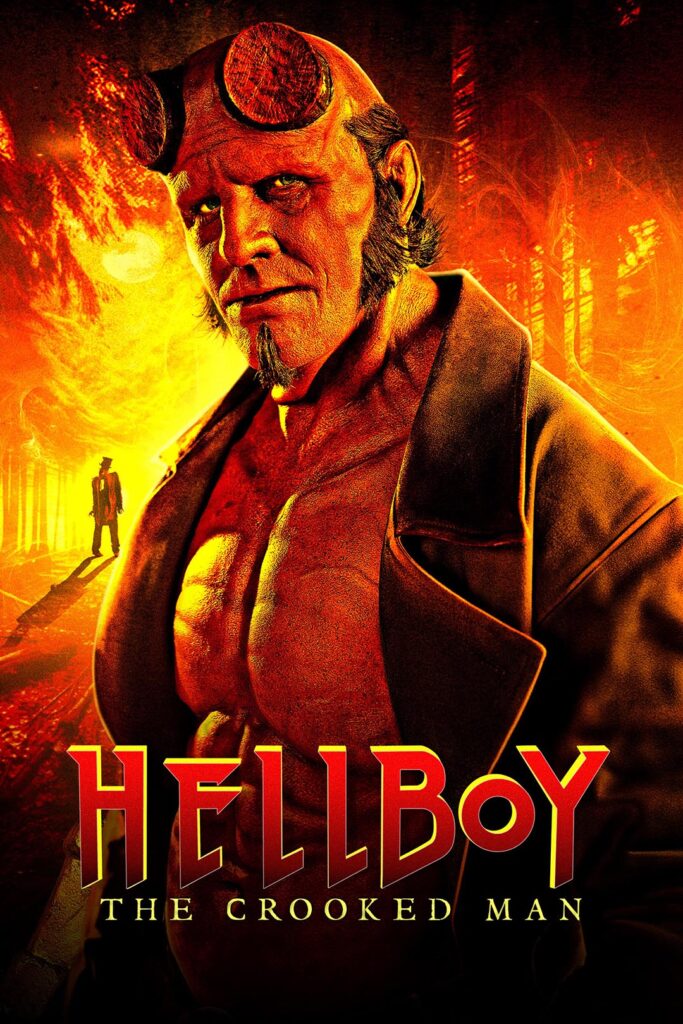
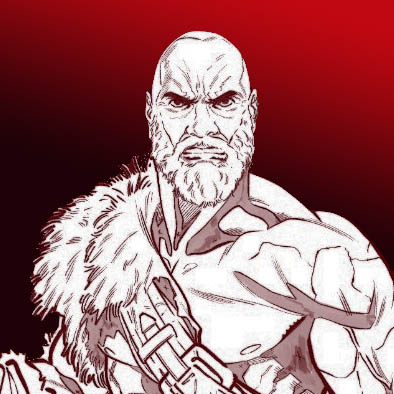
Article by Victor X
Victor Schmidt’s lifelong passions for literature and sports led him to discover his true love in superhero comics. Driven by an unyielding pursuit of the perfect story, Victor channels his energy into delivering insightful and valuable content to the comic book community while continuously refining his craft as a writer. In addition to his writing, he serves as an editor and creative reviewer, ensuring that every piece he touches is polished, impactful, and resonates with readers.
